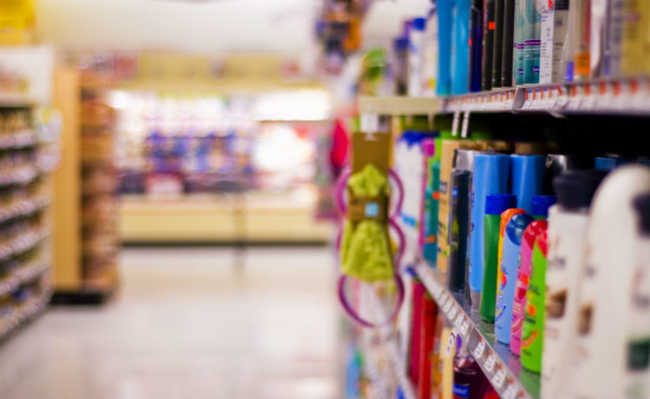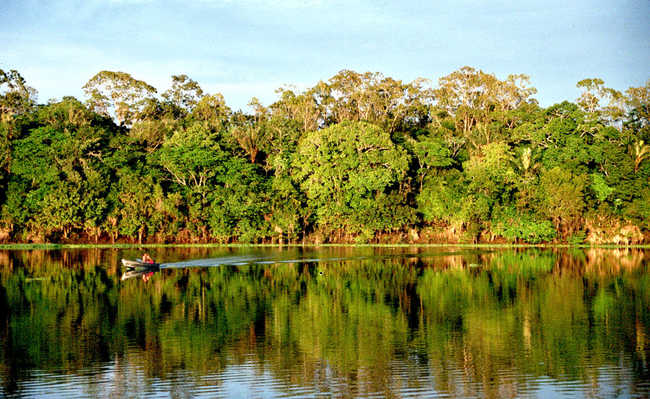Discover substances that can release dioxane, a component that is harmful to health
The substance is considered to be a possible carcinogen and may be present in many other components that are common in cosmetics.

what is dioxane
An industrial solvent that can increase the chances of developing cancer is used in cosmetics and you are likely to have direct contact with it. Dioxane, or 1,4-dioxane, is a volatile organic compound (VOC) that belongs to the ether family, and some types of dioxins can release it (learn more about dioxins here).
This compound is commonly found in deodorants and can be a contaminant in shampoos and cleaning products.
1,4-dioxane is usually present in the packaging of these products under the following names: 1,4-diethylenedioxide; 1,4-dioxacyclohexane; 1,4-dioxanne; di(ethyleneoxide); diethylene dioxide; diethylene ether; dioksan; diosane-1,4; dioxaan-1,4; dioxan; dioxan-1,4; dioxane; dioxane-1,4; ethylene ether glycol; paradioxane; p-dioxan; p-dioxane; p-dioxin, tetrahydro-; tetrahydro-1,4-dioxin; tetrahydro-para-dioxin and tetrahydro-p-dioxin.
As 1,4 dioxane can be a contaminant, that is, there is the possibility of it appearing unintentionally added to other compounds of the products, there are several substances that carry the dioxane with them: polyethylene glycols - PEGs, polyethylene, polyoxyethylene and ceteareth, polysorbate-20 and 60, sodium laureth sulfate and PEG-40 hydrogenated castor oil.
How do we get in touch with 1,4-dioxane?
Through air, water or skin, we can make 1,4-dioxane enter our body. Dioxane is also found in the air in regions close to the cosmetics, medicine, cleaning products and petrochemical industries.
Treated water that arrives at the tap may also contain dioxane. In the United States, this is a recent issue, which arose in the 1990s and the beginning of the 21st century. At that time, high concentrations of 1,4-dioxane were found in water bodies such as rivers, in groundwater and in treated water available to citizens. In Brazil, through some studies, it is possible to know that 1,4-dioxane is present in industrial wastewater, and that knowledge about the treatment for this compound is still few and not very deep. According to other research, chemical reactions elicited in tests led to the destruction of 1,4-dioxane in wastewater - but these signs are only initial. 1,4-Dioxane remains in water because it does not break down easily.
The contact of 1,4-dioxane with the skin can occur through the use of cleaning products and cosmetics.
Effects on human and environmental health
Dioxane is classified by the International Agency for Research on Cancer (IARC) as possibly carcinogenic to humans (group 2B) , that is, there is sufficient carcinogenic evidence in animal tests, but this evidence has yet to be verified through human studies . The cancer verified by the experiments was liver cancer. For an acute exposure (short period of time) 1,4-dioxane caused irritation to the eyes, nose, throat, in addition to vomiting and nausea. Tests carried out on the health effects of ingesting 1,4-dioxane from water have shown damage to the kidneys and liver.
As mentioned above, dioxane remains in the water and causes pollution of water bodies and treated water, since the methods for removing this contaminant are still little known and studied.
Regulation in Brazil and internationally
The National Health Surveillance Agency (ANVISA) maintains a dioxane derivative in the list of substances that cannot be used in personal care products, cosmetics and perfumes.
The US Environmental Protection Agency (EPA) sets the limit for 1,4-dioxane in drinking water. Just like the Food and Drug Administration (FDA) it also sets limits for 1,4-dioxane in foods and contraceptive drugs such as spermicides.
Alternatives
1,4-dioxane does not normally appear on packaging labels, the substances that appear are those that carry 1,4-dioxane as a contaminant. So be careful if your product contains 1,4-dioxane releasers.










